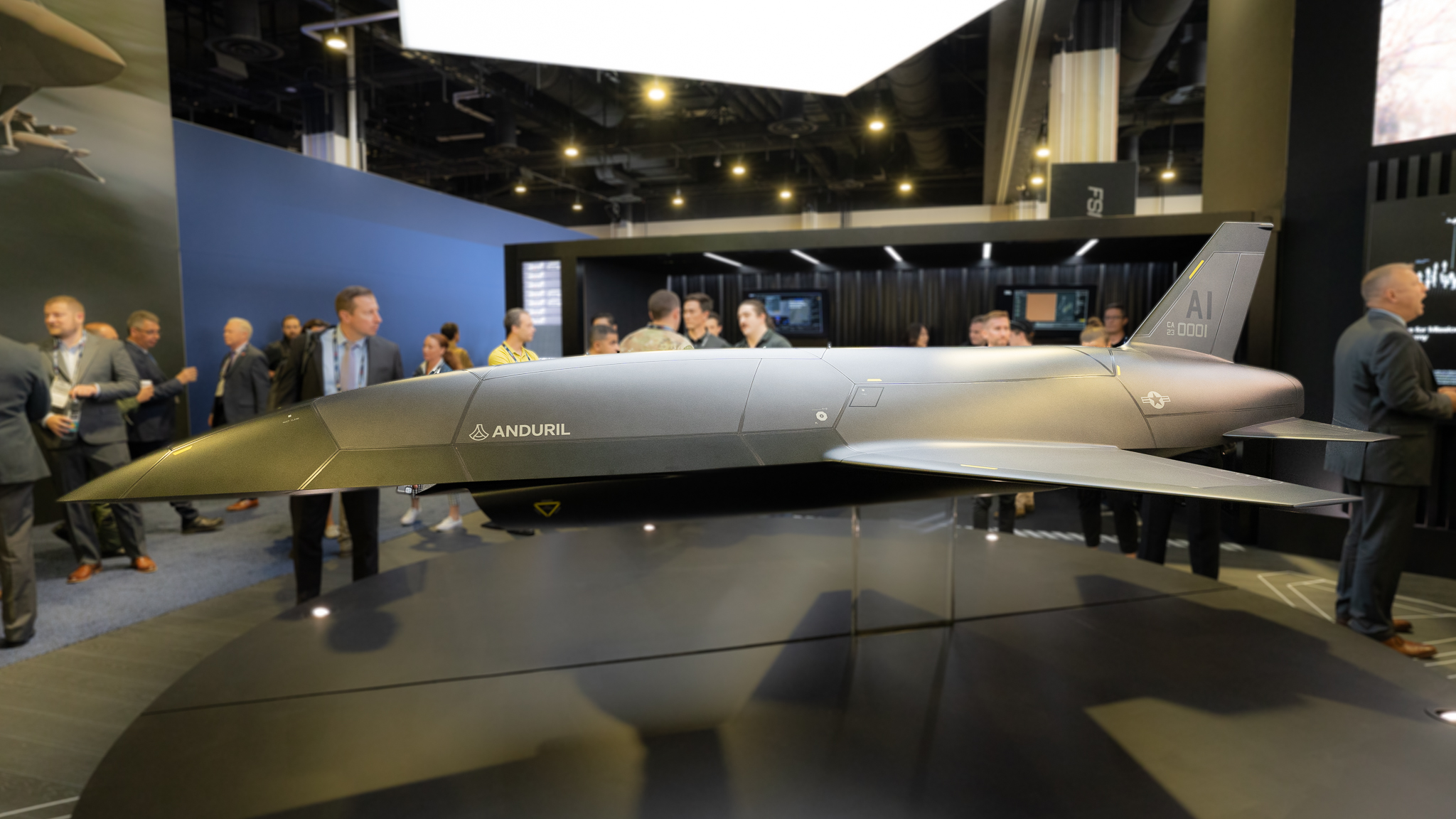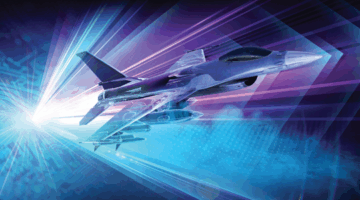
WASHINGTON — The Air Force is eyeing a thrust range of 3,000 to 8,000 pounds of force for future drone wingmen, and is setting its sights on launching an engine development program for the uncrewed systems known as Collaborative Combat Aircraft (CCA) in the first quarter of fiscal year 2025.
The new details, outlined in a Sept. 29 request for information (RFI), suggest the Air Force is looking for a “mid-sized jet engine” that would power a “fairly capable military-class aircraft,” according to Caitlin Lee, director of the Acquisition and Technology Policy Program at the RAND Corp. “[T]his kind of thrust could enable considerable speed and maneuverability if the drone is fairly small and fighter-like in size and design,” she said, or the Air Force could trade some of that agility for a larger drone with more range, similar to a Global Hawk.
Either way, the RFI, which was first reported by Aviation Week, also indicates the Air Force is trying to move fast. In it, the Air Force tells industry to assume “program initiation” will commence in the first quarter of FY25 and asks for capability in “discrete intervals” of three, five and seven years from the start date. Responses will help the government gather information on metrics like cost and schedule as well as evaluate “off-the-shelf, modified off-the-shelf, derivative, and new engine designs,” the RFI says.
The RFI targets, such as the thrust range, may not be final requirements since the government could refine them as it gathers feedback from industry. Lee said the FY25 date “is the latest the USAF should be starting if they reasonably want to have an engine ready for CCA anywhere in this decade.”
The powerplant criteria in the RFI as it stands would exceed capabilities of potential high-profile CCA contenders, according to Aviation Week, though Lee said some candidates that seem to meet the RFI’s thrust range are the Northrop Grumman subsidiary Scaled Composites’ Model 437, the Anduril Fury or possibly the Gambit series touted by General Atomics.
The RFI’s thrust range is also “very well aligned” with commercially available powerplants that could be installed in CCA, Lee said.
“The beauty of using commercially available engines for the CCA inventory is that they are fuel efficient and in widespread use on business jets, which means they have ample supply chains and maintenance support infrastructure,” she said.
But, Lee cautioned, there could be some drawbacks. Engines with those characteristics can come with multi-million-dollar pricetags, cutting against the Air Force’s goal of the drones providing “affordable mass.” And, Lee said engines in the outlined thrust class “may not enable runway-independent drone operations,” potentially limiting their versatility in the Indo-Pacific where the Air Force is striving to make operations more austere.
Earlier this year, the Air Force unveiled plans to spend aggressively on its CCA program, outlining billions of dollars in expenditures to field the drones by the end of the decade. With a government shutdown narrowly averted, the military services are now operating under a continuing resolution (CR) in lieu of an FY24 budget, though Air Force acquisition chief Andrew Hunter previously told Breaking Defense that the service could still execute on its CCA plans in the “near term” under a CR.
In May, Hunter said officials expected a sizeable vendor pool for the drone wingmen, adding that there would be plenty of on-ramps for industry through successive competitions. Lee said the “name of the game” for CCA “is making tough trade offs between size, weight and power,” all while satisfying lawmakers’ and senior Pentagon officials’ expectations that the drones are affordable and capable of being mass produced.
“I think what the US military needs is a family of drones, in different classes, to meet the operational demands it faces in the Indo-Pacific,” Lee observed. Smaller drones, possibly based in places like Japan or Taiwan, could provide mass and surveillance capability, whereas larger drones could play a “quarterback” role for their smaller counterparts and additionally pair with crewed platforms for a range of roles like escort missions or providing more missiles, she said.
“These larger drones will need more range, speed and payload, and seem to be the focus of this engine RFI. They would operate in partnership with manned aircraft — something more akin to the Air Force’s CCA concept,” Lee said.

